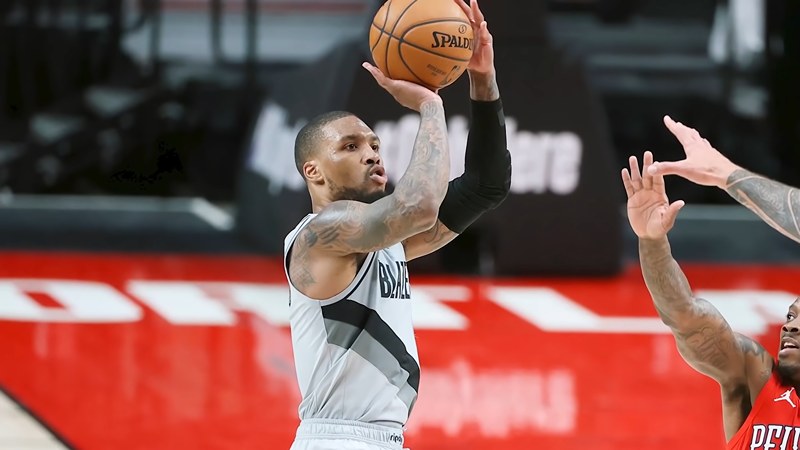Basketball is a game of strategy, skill, and rules that govern every aspect of play. Among these rules, the “3-second violation” stands out as a critical regulation that ensures fair competition and dynamic gameplay.
Whether you’re a die-hard fan or just starting to explore the world of basketball, understanding this rule is essential.
In this post, we’ll delve into the details of the 3-second violation, answering some frequently asked questions to provide a comprehensive overview. So, get ready and dig into the depth of the rules in the next phases.
What Is A 3 Second Violation In Basketball?
A 3-second violation in basketball occurs when an offensive player spends more than three continuous seconds in the key, also known as the paint or the free-throw lane. The key is the painted area beneath the hoop.
This violation is designed to prevent an offensive player from camping out close to the basket, which could create an unfair advantage.
The three-second count is reset whenever the offensive team gains possession of the ball in the frontcourt or when the ball hits the rim on a field goal attempt.
If the violation is called, possession of the ball is awarded to the opposing team. This rule encourages movement and spacing on the court, ensuring a more dynamic and competitive gameplay.
Basketball 3 Second Violation in NBA
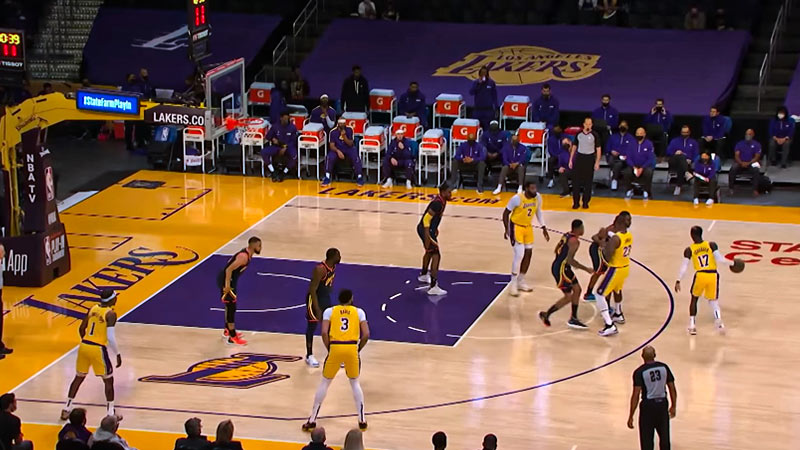
Here’s the explanation of the basketball 3-second violation in the NBA for your convenience. Check them out below.
Offensive Violation
The 3-second violation is an offensive infraction in basketball, primarily observed in the NBA.
Key Area
It occurs when an offensive player remains in the key, or the paint area, for more than three continuous seconds.
Purpose
The rule is intended to prevent an offensive player from camping near the basket, ensuring fair play and promoting ball movement.
Three-Second Count
Referees start counting when an offensive player enters the key. If the player doesn’t leave within three seconds, it’s a violation.
Reset Situations
The count resets when the offensive team gains possession of the ball in the frontcourt or when the ball makes contact with the rim on a field goal attempt.
Penalty
If the violation is called, the opposing team is awarded possession of the ball through a turnover.
Movement Emphasis
This rule encourages players to move around the court, improving team dynamics and preventing defensive disadvantages caused by stationary offenses.
Remember, these points apply specifically to the NBA’s interpretation of the 3-second violation. Different basketball leagues might have variations in their rules.
Basketball 3-Second Rule
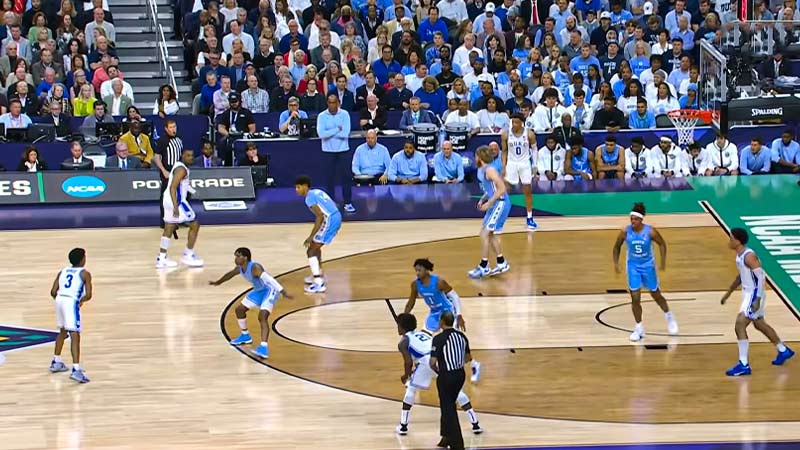
The basketball 3-second rule, often referred to as the “3-second violation,” pertains to the amount of time an offensive player is allowed to remain in the key, also known as the paint or the free-throw lane, while their team is in possession of the ball.
This rule is designed to maintain fair play, prevent offensive players from lingering too close to the basket, and promote movement on the court. Here’s a breakdown of the rule:
Offensive Limit
An offensive player is prohibited from spending more than three consecutive seconds in the key while their team has control of the ball.
Count Start and Reset
The three-second count begins when an offensive player enters the key and establishes both feet within the boundaries. It resets if the player leaves the key or the team loses possession, gaining a new 8-second count to advance the ball past half-court.
Exceptions
The count does not apply if an offensive player is actively guarding an opponent within the key or when attempting a shot within the allotted time.
Enforcement
Referees monitor this violation and whistle a violation if an offensive player exceeds the three-second limit.
Result
A 3-second violation results in a turnover, with the opposing team gaining possession of the ball. The inbound takes place on the sideline, nearest to where the violation occurred.
Strategy
Teams must employ strategic positioning and movement to prevent 3-second violations, emphasizing good court spacing and player rotation.
The 3-second rule encourages continuous gameplay, discourages overly defensive tactics, and ensures that offensive players do not gain an unfair advantage by lingering too close to the basket for extended periods.
How Many Seconds Does the Offensive Team Have to Pass the Basketball in Play?
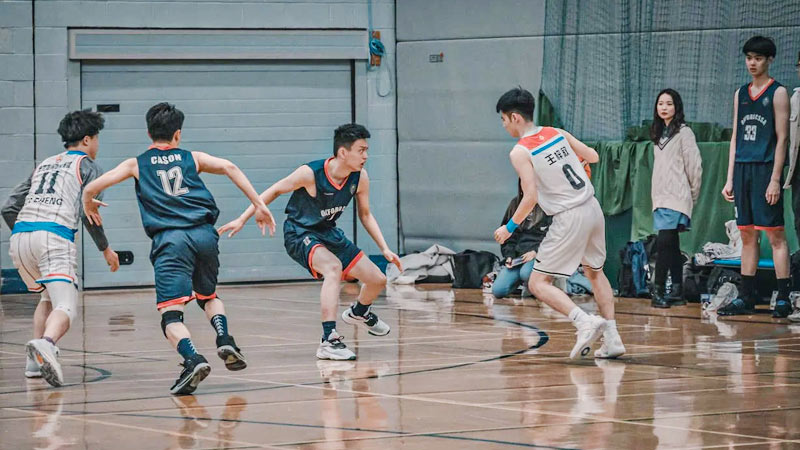
In the fast-paced realm of basketball, the clock is always ticking, and every second counts. Among the many rules that govern the game, the countdown of 8 seconds for the offensive team to advance the ball past the half-court line is a paramount one.
This rule doesn’t just dictate the tempo of the game; it ensures a balance between strategy and action, preventing any one team from monopolizing possession and keeping the spectators on the edge of their seats.
The 8-Second Countdown: Navigating the Frontcourt Challenge
- Frontcourt Possession Transition: As soon as the offensive team gains possession of the ball in their frontcourt, a crucial timer starts ticking.
They have precisely 8 seconds to maneuver the ball across the half-court line. This challenge is a pivotal moment that tests their ability to initiate their offensive strategy promptly. - Promoting Active Play: The 8-second rule works as a catalyst for an active and engaging pace of play. It compels the team to push forward, orchestrate plays, and make quick decisions. This impetus for quick action ensures that the game remains captivating for both players and spectators.
- Preventing StagnationOne of the core objectives of this rule is to prevent teams from stalling or employing tactics that might lead to extended periods of ball possession in their backcourt.
By imposing a relatively short timeframe, the rule discourages passive or delay-oriented strategies, encouraging teams to engage in meaningful exchanges.
Turnover Consequences and Dynamic Gameplay
- Risk of Turnover: Failing to advance the ball across the half-court line within the designated 8 seconds results in a turnover.
This turnover hands possession over to the opposing team, providing them with an immediate opportunity to score. The stakes are high, and teams must be efficient in their transition to avoid costly errors. - Dynamic Style of Play: The 8-second rule is one of the cornerstones of basketball’s fast-paced and dynamic nature. It ensures that the game flows smoothly, maintaining constant movement and minimizing periods of inactivity.
This attribute contributes to basketball’s reputation as a thrilling and action-packed sport. - Strategic Adaptability: The rule also challenges teams to adapt to various defensive strategies. Opponents may press aggressively in an attempt to disrupt the offensive transition and exploit the limited time.
This adds an element of tactical depth to the game, as teams must devise effective methods to counteract defensive pressure.
The 8-second rule in basketball is more than just a numerical restriction; it’s a catalyst for strategic ingenuity and athletic prowess. As teams navigate the challenge of advancing the ball within this short span, they contribute to the sport’s exciting rhythm and electrifying energy.
Lane Violation in Basketball
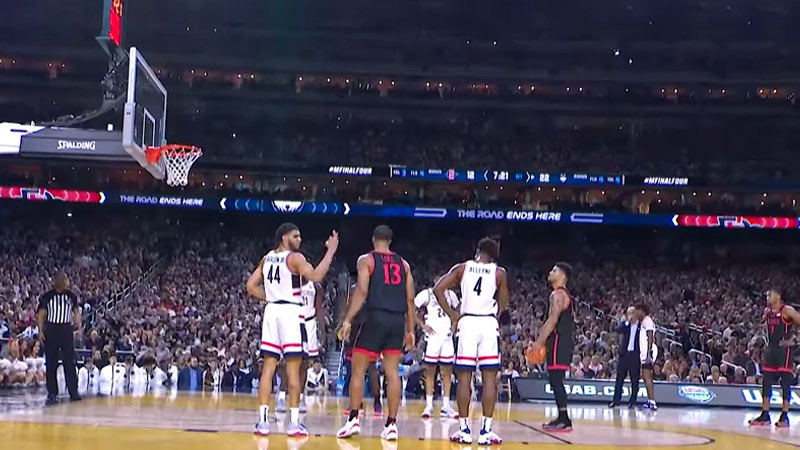
In the intricate landscape of basketball, even the smallest details can wield a significant impact on the outcome of a game. Among these nuances, the “lane violation” emerges as a crucial regulation that comes into play during those intense moments when the ball is at the free-throw line.
Navigating Free Throw Attempts
- The Infraction: A lane violation is a rule infraction that transpires in the heat of free throw attempts. These instances are rife with anticipation, and a player’s misstep can tip the balance in favor of the opposing team.
- Key Players and Positioning: The violation centers around players strategically positioned along the free-throw lane, often referred to as the key or paint. This designated area holds a critical role in free throw scenarios, where seconds and positioning can determine success.
- The Timing Factor: The crux of a lane violation revolves around timing. Players are required to adhere to a specific sequence of actions that must align with the release of the ball by the shooter.
Roles and Regulations: Lane Violations
- Free Throw Dynamics: Lane violations manifest specifically during free throw attempts, adding an extra layer of complexity to this already pressure-packed scenario.
- Offensive Intrusion: An offensive lane violation transpires when a player, whether inadvertently or strategically, crosses into the free-throw lane before the ball strikes the rim. This move is often an attempt to gain an advantageous position for securing an offensive rebound.
- Defensive Restraint: Conversely, defensive players stationed on the lane must exhibit restraint. They are prohibited from crossing the free-throw line until the ball makes contact with the rim. This rule prevents defensive players from prematurely altering the trajectory of the ball.
Unveiling Consequences and Exceptions
- The Outcome of Violation: If a lane violation is identified, and the subsequent free throw is missed, the shot is not retaken. Instead, the opposing team is awarded possession of the ball, transforming a rule infraction into a strategic advantage for the opponent.
- Selective Exceptions: In some unique cases, if a shooter successfully makes a free throw despite a lane violation, the violation might be overlooked. This exception accounts for instances where the violation doesn’t impact the outcome directly.
Enforcement and the Pursuit of Fairness
Referees as Watchful Guardians
It’s the responsibility of the referees to maintain the integrity of the game by monitoring and enforcing the lane violation rule. Their keen observation ensures that the outcomes of free throw attempts are unaffected by premature movements.
Lane violations are a testament to basketball’s intricate rulebook, where timing and positioning are critical. This rule underscores the sport’s commitment to fairness and equal opportunity, even in the pressure-cooker moments of free throw attempts.
FAQs
What is the 3-second violation in basketball?
The 3-second violation in basketball refers to an offensive player spending more than three consecutive seconds in the key, also known as the paint or free-throw lane, while their team is in possession of the ball.
The rule aims to prevent players from camping near the basket and encourages movement on the court.
When does the 3-second count start and reset?
The count begins when an offensive player establishes both feet in the key. It resets if the player leaves the key, the team loses possession, or the ball touches the rim during a field goal attempt.
What happens if a 3-second violation is called?
When a violation is detected, possession of the ball is awarded to the opposing team as a turnover. This rule promotes fair play and discourages stationary offenses.
Are there any exceptions to the rule?
Exceptions exist. The count doesn’t apply to players actively guarding an opponent within the key or those attempting a shot within the allocated time.
How does the 3-second violation affect gameplay strategy?
Teams must ensure their players move strategically, maintaining proper spacing and avoiding prolonged presence in the key. This rule forces teams to adapt and keep the flow of the game dynamic.
Wrapping Up
The 3-second violation serves as a fundamental aspect of basketball that enhances the sport’s competitiveness and ensures an equitable playing field.
By preventing players from lingering too close to the basket, this rule encourages strategic movement and continuous action on the court.
Now equipped with a clear understanding of this rule and its implications, you’ll be better poised to appreciate the intricate tactics and skills that make basketball a thrilling and engaging sport. Thank you for supporting us.

